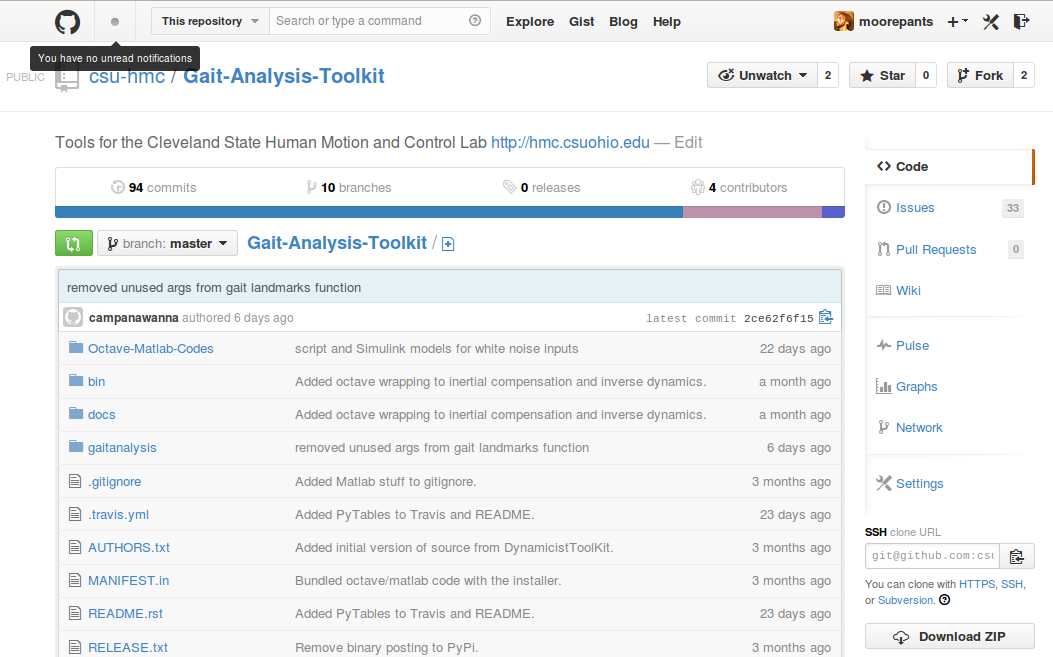Identification of human control during walking
Jason K. Moore
Cleveland State University
February 27 2014
Exoskeletons
Don't move naturally, can't balance
Idealized Gait Feedback Control

Idealized Gait Feedback Control
Block Diagram Algebra
\[ \mathbf{m} = \mathbf{m}_0(\varphi) + \mathbf{K}(\varphi) [\mathbf{s}_0(\varphi) - \mathbf{s}] \\ \] \[ \mathbf{m} = \mathbf{m}_0(\varphi) + \mathbf{K}(\varphi) \mathbf{s}_0(\varphi) - \mathbf{K}(\varphi) \mathbf{s} \\ \] \[ \mathbf{m} = \mathbf{m}^*(\varphi) - \mathbf{K}(\varphi) \mathbf{s} \]
Random Belt Speed Variations

|
Gains: v=1.2 m/s
 Subject 1
Subject 1
|
 Subject 2
Subject 2
|
Future
- Explore full \(\mathbf{K}\) matrix.
- Add in time delays.
- Remove clock from controller.
- Non-linear control models: e.g. neural network.
- Use indirect system identification approach with plant model.
- Try out the controller on a simulation that has open loop control.
- Try out the controller on the Indego.
Tutorial
- Practice: tomorrow @ 2pm, SH 269, CSU
- Official: Tuesday March 4th, U of Akron

Open Source
https://github.com/csu-hmc/Gait-Analysis-Toolkit
/
